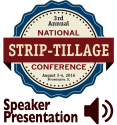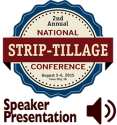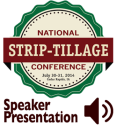Advertise Follow Us
Water Management
Strategies for preserving or managing moisture in strip-till systems, including tiles, cover crops, irrigation and other approaches.
ARTICLES
From Dryland to Dripline: Early Tech Adoption Pays Off for 2025 Strip-Till Innovator
Ray Flickner boosts profitability & water use efficiency with strip-till & subsurface drip irrigation
Read More
How I Save $768 Per Acre with Strip-Till & Cover Crops
Farmer takes ‘strip-till approach’ to water management with only 7 inches of rain annually, cuts down on equipment passes & inputs
Read More
Press Release
Habitat Incentives Program Helps Farmers Add Conservation Practices
PFI program open for farmers and landowners seeking financial and technical assistance for conservation practices
Read More
Press Release
18th Annual Conservation in Action Tour Features Unique Planting-Season Farm Tours on the Great Plains
Early bird registration now open for Sioux Falls, S.D., event on May 6-7
Read More
















